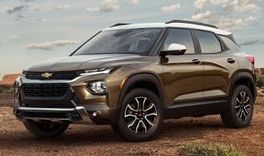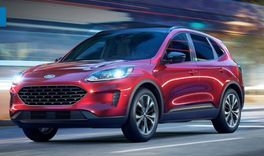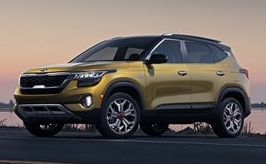The Chevy Impala
- Debra

- Jul 4, 2021
- 9 min read
Updated: Jul 2
Independence Day 2021

A large part of the rollicking fun of watching Seasons 3-5, the 1962-1965 episodes of the TV Western Bonanza is: The Impala! Dinah Shore and her sales pitch, See the USA in your Chevrolet! — were replaced by the men of the Cartwright family. The original shows featured promo bumpers of the NBC sponsor, Chevrolet. Lorne Greene was the ultimate master showman and seller of this beauty in the Chevy motorcar stable: The Impala.

Dan Blocker got to squeeze himself in and out of the Chevy II, just to prove its ginormous size. Michael Landon took hold of the reins of the Corvair, and Pernell Roberts sported the Corvette. I get the feeling that unless Pernell was handed the keys to that supremo sports car, he was gonna be even more unhappy on the set! Little Joe drove the car that the killjoy Ralph Nader, and his Unsafe at Any Speed, would, just a few short years later, kill. Oh, well, Little Joe always was a thrill-seeker. He rode a pinto, the name of the car that became the next explode-upon-impact death-car, and was, in fact, my very first car.

Lorne Greene was the perfect spokesman for the Impala. When Lorne liked a product, he really liked it. And when he didn’t, he worked so he wouldn’t have to have anything to do with it. That work ethic reminds me of me! And I love the Impala, at least the Classic Impalas. I was but a little girl in New Jersey when first I saw those American-made artistic works of steel, but I got to know very well the alluring designs and fantastic features of the Impala. Credit for my car acumen belongs to my much older and favorite brother-in-law. He owned an Impala as His First Car. Over the next decade or so, he’d trade in the old Impala model for the newer one, at a rate of every three-or-four years, which was when the newer model enticed him enough to do a trade-in of the old car.

The Chevelle sorely tempted him in the late-1960s, but the practical side of him had to admit that he was a married man and father of two young boys, with another on the way. The two-door coupe wasn’t gonna accommodate hauling the playpen and stroller and all of the other “portable” kiddie gear that used to be big, bulky, heavy and nearly non-portable. When I went away to college in D.C., Big-Brother-in-Law decided to sell his aging 1972 Impala and replace it with a Datsun for the wife who was going back to work.

He gave me first dibs at the car, for free! I asked: “Where am I going to dock the boat?” By the mid-1970s, life had become very complicated, and not just for me! The fully-paid off ’72 Impala, in the root beer color, stayed with Dear Brother-in-Law a few more years. The Rice Burner didn’t last long. Dear Sister got into a fender-bender, which resulted in totaling the thing. The Datsun was replaced by a Toyota, and my fireman brother-in-law bought a used Chevy truck, circa 1970. This truck became known as The Egg Truck because it was used for his 2nd job, an entrepreneurial egg-delivery service from the hens in rural New Jersey to the townspeople whose latest fuming furor was about their children being bussed to urban-blighted government schools outside of their own public school district. Which was the primary reason why those parents had chosen to reside in the small town they called home. (Home-schooling and private schools really got going during that social experiment.) Obviously, the Urban Area, otherwise known as the City, had continued to fall apart in the 1970s. The urban decay was accelerated by the full funding of the LBJ welfare-state by Tricky Dick. By the dawn of 1979, I’d fled the urban ash heap of Washington, D.C. for Sacramento, California. There, I was faced with the horrible necessity of having to buy a car. Living life was impossible without a set of wheels. The reality of the Californian Love Affair with the gas-powered automobile has fueled many taxes, fees, regulations, and pipe-dream ripoffs of just about everyone in the Golden State. Love affairs can be quite costly, even more costly than a marriage. And the prototypical Californian is not a nester, but a quester.

There is always a new and cooler car just around the factory corner! Although this morning, when I learned that, in California, Governor Gruesome is still mandating the Wearing of the Mask in factories, I asked Dear Husband if there are any factories left in California!
Fresh from the factory, the Impala was made for millions and millions of Americans. One of those proudly patriotic Americans was my favorite brother-in-law. Thanks to his sets of Chevy wheels, I was, by the age of 12, a car buff of what would become Classic Cars. In New Jersey, the cars that drove me down to the shore were wonderful trips in themselves.
Let’s start with the 1961 Impala, the baby of that Third Generation. Touted as luxurious, the interior left a lot to be desired, in terms of comfort and upholstery. Lorne Greene raved about the sleek line of the roof, known as the "bubble-back" style for 1961. The body, however, was still boxy. The nifty and fun 3-dot tail light was the signature mark of this model.

The 1962 model offered more exterior chrome along the side, with a fender that covers the rear wheel, but the car was otherwise basically the same design. The exterior chrome trims moved downstairs on the 1963 Impala; the body is almost exactly identical to the previous year’s model. The 1964 Impala features a wraparound chrome molding on the side of this last of the Third Generation of the Chevy Impala. Competition from other auto-makers was pushing the drawing board in directions from which there would be no return. The 1964 Chevelle was Chevrolet’s non-inventive response to the Mustang. The earliest model was large, thereby diminishing the Sport, or even Super Sport aspect to the design. The 1968 Chevelle was the automotive rival that my brother-in-law so dearly desired!

The next generation, the Fourth, arrived in 1965. This Impala broke the mold in terms of originality and its initial attempts to offer the quality and sophistication, inside and out, of a Cadillac. This model is the one that I most recall. It was, in fact, the best-selling of all of the Impalas. The back-seat felt like a living room couch, which makes more of a statement about indoor furniture of that era than about auto-upholstery. Danish Modern cushions were hard as a rock! The hump in the rear fender of the ’65 Impala, was, however, an ominous sign of things to come.

The fact that the guns-and-butter economy of America was heading in the opposite direction of wherever those big cars were going — it still amazes me how, even then, corporate heads were nearly completely divorced from the body of the customer. When Lee Iacocca devised the 1964 Ford Mustang, he’d either had a divine case of intuitive inspiration, or got lucky, or was purposely going against the flow of where all of those sleek car-body boats would run aground. This complete re-design of the Impala in 1965 sold wildly in an America that still believed solidly in itself. The War on Society by LBJ had just begun. This war has yet to be won by the citizens of this country, in the here and now. Back then, those proud-to-be Americans bought more than 1 million units of this car. That figure is an all-time annual sales record that has yet to be surpassed!

This 1965 Impala was truly full-sized, and it offered, for real, the level of luxury about which Lorne Greene so smoothly crowed back in 1962. The sides were dramatically rounded, with a new front end and hood contours. The windows were curved and frameless, thereby eliminating a “pillar”. The front windshield is even more sharply and aerodynamically angled. The 1965 Impala announced it was The Chevrolet Car of the Future. Since the 1965 model sold like hotcakes, the design changes to the 1966 model were minimal, but certain changes were indeed made, and not for the better. The triple-dot tail lights, a defining feature for almost a decade, were replaced by triple-rectangular tail lights. This Impala was perhaps trying to compete with the atrocious Ford Galaxie. By 1966, the “other network,” CBS, was hip-deep in Ford Galaxies. The Andy Griffith Show alone could have been a car dealership!

The Impalas of the years 1967-68 were re-styled — looooonnnnnger! And face-lifted with a new front end. The rear tail lights were now horse-shoe shaped and housed in the bumper, thereby abandoning even more of Southern California nirvana of The 3-Dot Impala. The re-design also included the curvilinear “Coke bottle” styling, borrowed from the Corvette’s front and rear fender bulges. It’s a dubious distinction for an automobile company to start swapping styles from one model to another. Nowadays, sedans, especially those Cross-over SUVs, all look the same, regardless of the manufacturer.
Have you seen the Chevy Trailblazer of 2021? How about the newest Ford Escape, or the Eco-Sport? Take a look, if you dare, at the KIA Seltos of 2021. Does anyone know what the made-up word, Seltos, even means? The car names possess no meaning, to better correspond with their designs, that have no style. That dreadfully boring sameness of non-style comes courtesy of government intrusion into free-enterprise. Federal regulations in the USA placed the club foot of government on the gas pedal of any newly-produced motor vehicle.

This anti-business, anti-profit mania started in the late 1960s with safety features mandated by “Nitsa”, NHTSA, the National Highway Traffic Safety Administration. The safety requirements were initially fine, and completely warranted. The air-bag mandate-mess that began in the 1990s is now up to 12 air-bags per car. The passenger has a better chance of being KO’d and then smothered by the air-bag, than of being injured by the impact of an equally imploding air-bag conveyance on four wheels. And then there are the copious environmental regulations that relentlessly suffocate the joy of even owning a car. The EPA, on state and federal levels, over-produces codification of legislation that malfunctions against the functioning of any healthy and thriving automobile industry.

In California, The Crash Dummy, aka Gavin the Green, remains neurotically fixated on out-doing the federal greenies. This latest greenhorn grandstander came down with an acute case of Ronald-Reagan-Envy even before he collided into the Governorship in January 2019. He somehow thinks his idiotic edicts and silly provisos are sure as shootin’ signs of assertiveness and decisiveness, not of servilely opening his pockets to insert enviro dollars. California’s longstanding love affair with the internal combustion engine has thereby become an infernal and immoral mess because of the Nitwit Environmentalists and their ignorance of, well, everything except illogic and lunacy.

The MPG sticker was not part of the car-buying scene during those halcyon years of the Classic Impala. The mid-late 1970s, with its gas crises, and the cheap go-cart preferences of the Baby Boomers for foreign-made cars (anything that was NOT built in the USA) brought to the American citizen, consumer, and taxpayer the obsessive official mantras to “save gas” and “save electricity” and “spare the air” and “save water”. This nation has barely escaped the fear-mongered sensationalized craze to “save lives”, not by wearing a worthwhile seat belt, but by wearing a worthless mask. Me, I’m trying to save my sanity, and I am not alone in this noble effort. The Collective Response to the Overblown Commie-Fonctionnaires is: Spare me, and spare your breath. Just shut up.
Why the American people have put up for decades with this statute-sanctioned bilge of fraudulence, I do not know. More of us need to explore those years when the Impala was free to roam, at will; when sane and sensible adults were in charge of the steering wheels of society; and when the ships of state were not drunkenly commandeered and steered into the deficit-ground by blinking idiots and fools.

As for those superbly steered Impalas, by 1969, the Chevrolet Impala was losing out in sales to the new Caprice. Both cars, however, were cruise ships of steel. The last of the Fourth Generation ended with the 1970 model, the end of this line, and the end of a way of life for the Classic Car lover.
The buyer and the builder of the American automobile were set on a collision course, built by the momentous events of the world within and outside of this nation. The first oil embargo of the 1970s arrived to school the youngest Americans in the cruel realities of energy dependence for America. Of course, an entire federal agency, the Department of Energy, was established by Jimmeh in 1977, to not solve the energy crisis. That never-ending and costly debacle in the United States did finally get solved, during the past four years; but the domestic fat cats can’t swill from the till with an energy-independent USA.

This July 4, I shall celebrate not only the independence of our nation from the tyrants of Great Britain of the long-ago; I shall celebrate the awakening independence of our citizens from the feckless tyrants of today in the USA. Chevrolet was founded in 1911 in the USA by Boston-born William C. Durant and Swiss-born Louis Chevrolet. At the time of this company’s sponsorship of Bonanza, Chevrolet was celebrating its business of 50 years in this country. By 2011, Chevrolet had seen better days; the 1960s were among the best of them. Currently, there exists only the GM Blob, the General Motors Global Glob. Wide-scale efficiency, and the cutthroat need to survive whatever the market and the federal government will do to them next, have forced car corporations to huddle their conceptions and innovations into one huge vat of a non-ingenious soup that is safe and sure and stale, but not necessarily even profitable.

Creativity does not occur because of crowd-funding or group-polling or at the behest of bureaucratic directives. One man, or woman, with an incredible idea holds fast to the design of that idea, and refuses to wimp out over anxieties that have become standard-operating-procedure for government hacks to play power trips over other people. “See the USA in your Chevrolet” sounds like a fantasy in a nation where the citizens have been treated by public potentates like the road under those hot wheels. It’s a foolish notion for anyone to believe that any free person will submit to being treated like cattle, not when he realizes he’s in the driver’s seat, and is motoring toward freedom.






